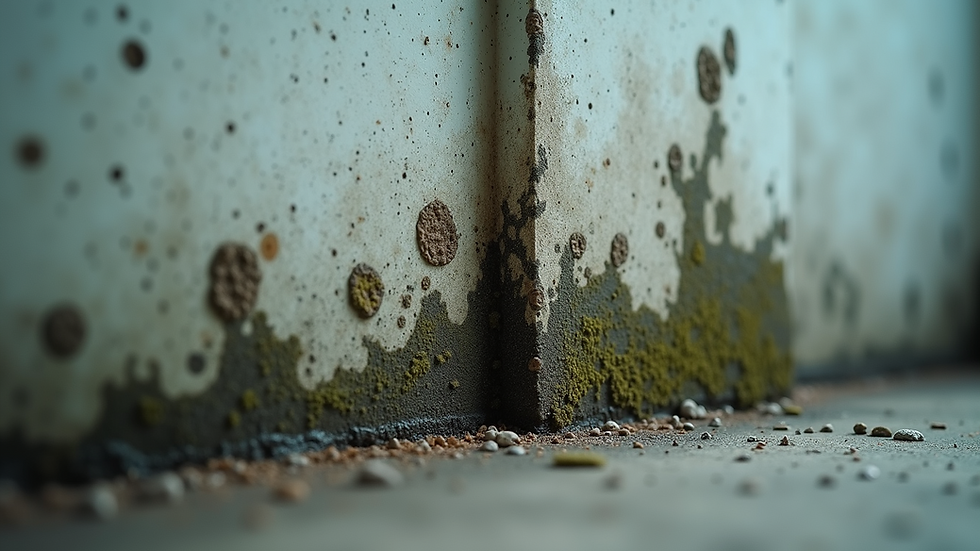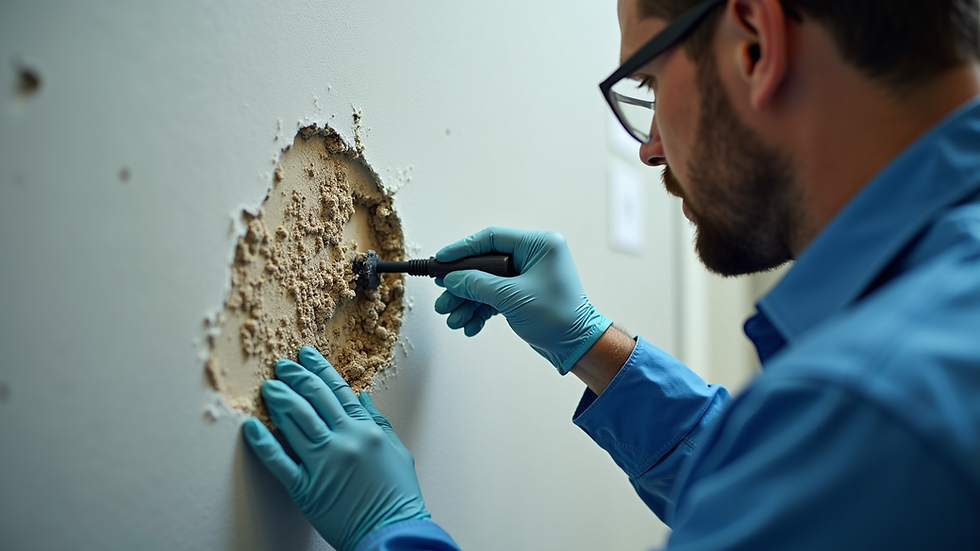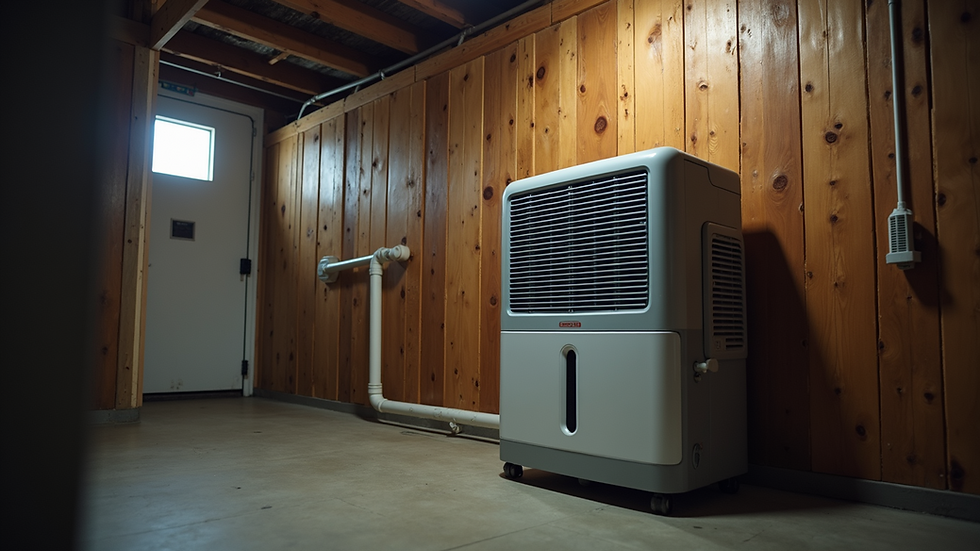Effective Solutions for Mold Problems
- CDS Contractors Inc

- Sep 4, 2025
- 4 min read
Mold problems can be a real headache, especially when they start affecting your home or business here in Orlando. If you’ve noticed that musty smell or seen those dark spots creeping up on your walls, it’s time to take action. Mold doesn’t just look bad - it can damage your property and impact your health. The good news is, there are effective mold removal methods that can help you regain control and keep your space safe and fresh.
In this post, I’ll walk you through practical solutions for mold problems. I’ll explain the best mold removal methods, clarify the difference between mold removal and mold remediation, and share tips to prevent mold from coming back. By the end, you’ll feel confident about tackling mold issues head-on.
Understanding Mold and Why It’s a Problem
Mold is a type of fungus that thrives in damp, warm environments. It spreads by releasing tiny spores into the air, which can settle on surfaces and grow if conditions are right. Mold can appear in many places - behind walls, under sinks, in basements, or even inside air conditioning units.
Why should you care? Mold can cause structural damage by eating away at wood, drywall, and other materials. More importantly, it can trigger allergic reactions, respiratory problems, and other health issues. If you or anyone in your space experiences sneezing, coughing, or skin irritation, mold might be the culprit.
The first step to solving mold problems is understanding where it grows and why. Mold loves moisture, so leaks, poor ventilation, and high humidity are common causes. Fixing these underlying issues is key to any mold removal method.

Mold Removal Methods: What Works Best?
When it comes to mold removal methods, you have several options depending on the severity of the problem. Here are some of the most effective approaches:
1. Manual Cleaning with Detergents and Water
For small mold patches, scrubbing with soap and water or a detergent solution can do the trick. Use a stiff brush and wear gloves and a mask to protect yourself. After cleaning, dry the area thoroughly to prevent mold from returning.
2. Using Mold-Killing Solutions
There are commercial mold removers and natural alternatives like white vinegar or hydrogen peroxide. These solutions kill mold spores and help prevent regrowth. Spray the affected area, let it sit for 10-15 minutes, then scrub and rinse.
3. Removing and Replacing Damaged Materials
Sometimes, mold penetrates porous materials like drywall, ceiling tiles, or carpet. In these cases, the best mold removal method is to remove and replace the affected materials. This prevents mold from hiding inside and spreading further.
4. Improving Ventilation and Reducing Moisture
Mold removal isn’t just about cleaning. You need to address moisture sources. Use dehumidifiers, fix leaks, and improve airflow in damp areas like bathrooms and basements. This helps keep mold from coming back.
5. Professional Mold Remediation
For extensive mold problems, professional help is often the safest and most effective choice. Experts use specialized equipment and techniques to remove mold safely and thoroughly. They also identify hidden mold and moisture issues you might miss.
If you want reliable, thorough mold removal, consider mold remediation services. These professionals have the experience and tools to restore your property quickly and safely.

What is the difference between mold removal and mold remediation?
It’s easy to confuse mold removal and mold remediation, but they are not the same. Understanding the difference helps you choose the right approach for your situation.
Mold removal refers to the process of physically cleaning or eliminating mold from surfaces. This might involve scrubbing, using chemicals, or removing moldy materials. It focuses on getting rid of visible mold.
Mold remediation is a broader process. It includes mold removal but also addresses the root causes of mold growth. Remediation involves fixing moisture problems, preventing future mold, and restoring affected areas. It’s a comprehensive approach to ensure mold doesn’t return.
Think of mold removal as cleaning the symptoms, while mold remediation treats the underlying disease. For serious mold issues, remediation is the best way to protect your property and health long-term.
How to Prevent Mold from Coming Back
Once you’ve tackled mold, the next step is prevention. Mold loves damp, dark, and poorly ventilated spaces, so your goal is to keep these conditions in check. Here are some practical tips:
Fix leaks immediately. Check pipes, roofs, and windows regularly.
Use exhaust fans in kitchens and bathrooms to reduce humidity.
Keep indoor humidity below 60%. Use a dehumidifier if needed.
Ensure proper drainage around your home to avoid water pooling.
Clean and dry wet areas within 24-48 hours.
Use mold-resistant products like drywall and paint in moisture-prone areas.
Regularly inspect hidden areas like behind appliances and under sinks.
By staying proactive, you can keep mold at bay and protect your investment.

When to Call in the Experts
Sometimes, mold problems are too big or complicated to handle on your own. If you notice any of these signs, it’s time to call professionals:
Mold covers a large area (more than 10 square feet).
Mold returns quickly after cleaning.
You smell a persistent musty odor.
You experience health symptoms linked to mold.
Mold is inside your HVAC system or walls.
Professional mold remediation services can assess the situation, remove mold safely, and fix moisture problems. They use advanced tools like air scrubbers, HEPA vacuums, and moisture meters to ensure thorough cleanup.
For Central Florida homeowners and business owners, working with a trusted local company means faster response times and knowledge of regional climate challenges. This helps ensure your mold problem is solved efficiently and effectively.
Taking Control of Mold Problems Today
Mold problems don’t have to take over your space or your peace of mind. With the right mold removal methods and prevention strategies, you can protect your home or business from damage and health risks. Remember, the key is to act quickly, clean thoroughly, and fix moisture issues.
If you’re facing a serious mold problem, don’t hesitate to reach out for professional help. Mold remediation services offer the expertise and equipment needed to restore your property safely.
By staying informed and proactive, you can keep your environment healthy, comfortable, and mold-free for years to come.





Comments